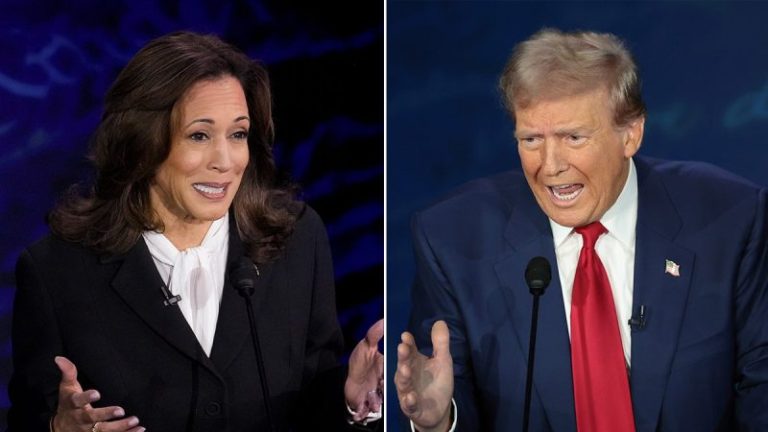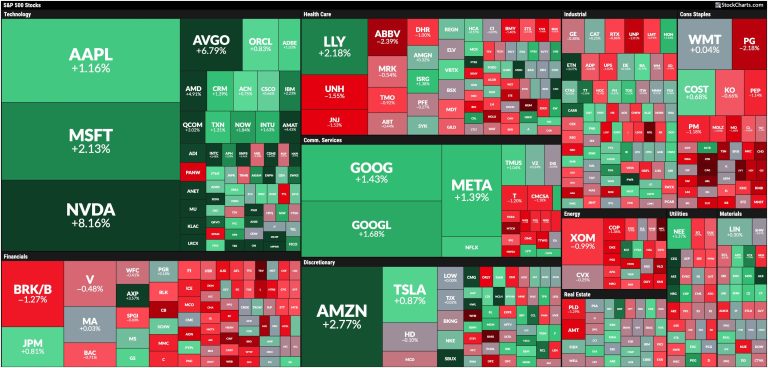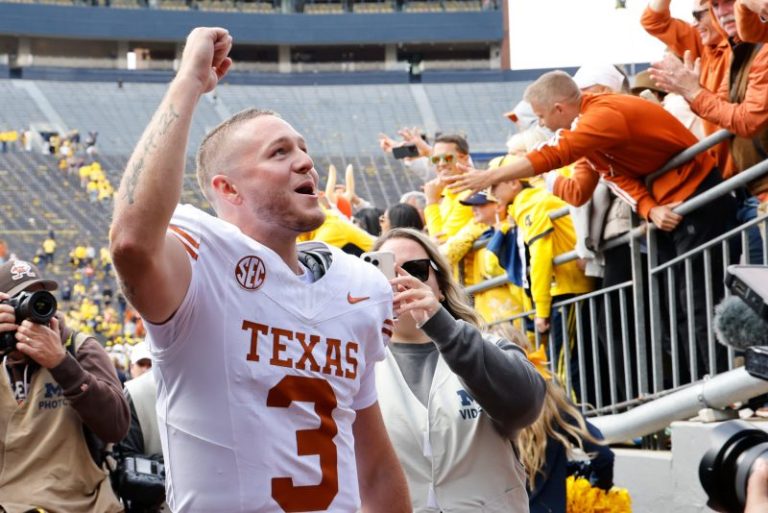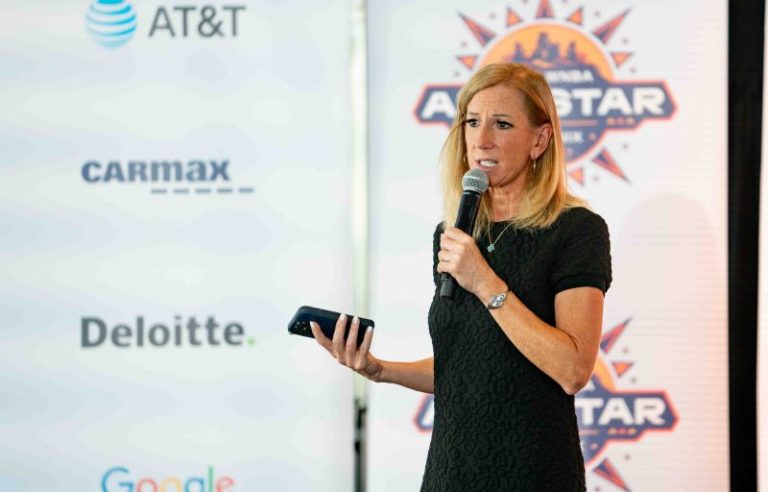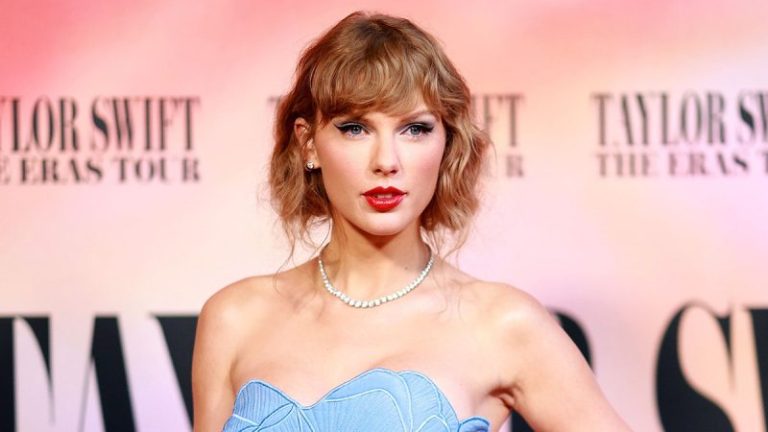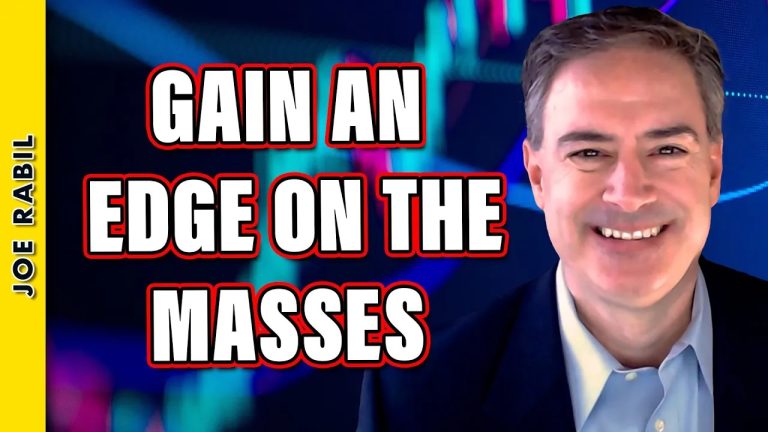You’ve heard it before, but now it’s undeniable: Texas football is back. That, plus Oregon’s struggles and a Notre Dame revelation in this week’s First and 10.
1. Texas football was lost but now it’s found in the SEC
A quick refresher for those forgetting just how unbearably lost Texas football was not so long ago.
The big, bad Longhorns, the most valuable television property in all of college sports, the kings of excess and the good life, actually complained to the Big 12 because rival Oklahoma — are you ready for this? — flipped the Hook ‘Em hand gesture and pointed down.
Mommy, the mean men are making fun of us again!
It’s enough to make every red-blooded college football fan puke.
I’m not sure what was more emasculating for once loud and proud Texas: that it complained, or that the Big 12 capitulated and started throwing flags on those flashing horns down.
Personal foul, Team Soft.
Now here we are, and the thought of that nonsense — with the ugly end to the golden era of Mack Brown, and the failed versions of Texas Is Back under Charlie Strong and Tom Herman — is far in the rearview.
Texas, everyone, is roaring into the SEC in its first season in the best conference in college football. Oklahoma is limping behind, scrambling for answers.
“We are capable of anything,” Texas coach Steve Sarkisian said Monday at his weekly press conference. “We are entitled to nothing.”
Welcome, Texas, to officially being back.
It’s almost like the program with every possible advantage has been drawn into some strange football vortex with its entry into the SEC, the conference with every possible advantage. From annoying once-was demanding everything or else, to surging what-is taking anything it wants.
Meanwhile, there is bitter rival Oklahoma, which seemingly snuck into the SEC party on the tails of Texas (more on that later) — despite dominating Texas since the birth of the Big 12 in 1994.
Even with two losses in three games to the Sooners, Sarkisian is doing just about everything right. Recruiting at an elite level, developing NFL Draft picks and, more than anything, changing the longheld narrative of Texas football.
Elite players, elite coaching. We all know where this is headed.
2. Meanwhile, what’s up with Oklahoma football?
For every action, there’s a corresponding reaction. Or in this case, bad football at Oklahoma.
By the time it ended last weekend, Oklahoma had 252 total yards, punted eight times and averaged 5.2 yards per pass attempt in a four-point win over Houston.
All of that ugly underscored a growing narrative that – fair or not, real or not — has taken hold. Texas is is new SEC darling, the Sooners are the team tagging along.
Even though Oklahoma and coach Brent Venables have won two of three games against Sarkisian and Texas, even though one of Texas’ two losses in last year’s breakout season was to the Sooners, there’s skepticism in and outside Norman.
The same Oklahoma that couldn’t stop anyone in Venables’ first season lost twice by a combined eight points in the 2023 regular season to straighten the curves. That is, until Arizona thumped the Sooners in the Alamo Bowl, and until fans booed often last weekend during the uninspiring win over a rebuilding Houston team that was blown out by UNLV a week earlier.
If you think that’s a problem, let me introduce karma: In two weeks, after this weekend’s home game against Tulane, Oklahoma will play its first SEC game against white-hot Tennessee.
It was Vols coach Josh Heupel, who won a national title in 2000 as a plucky quarterback at Oklahoma, who helped kickstart the Sooner’s two decades of dominance over Texas with a Heisman Trophy finalist season. And it was Heupel who was summarily fired as offensive coordinator after the 2014 season – a move that, to this day, still motivates him.
CALM DOWN: Five biggest overreactions after Week 2
3. Texas is back, The Epilogue
Elite players win championships. It’s why Alabama, Clemson and Georgia have dominated the first decade of the College Football Playoff.
It’s why Texas truly is back.
Sarkisian’s first four recruiting classes at Texas were ranked 15th, fifth, third and sixth in the nation, according to the 247Sports composite rankings.
“It’s an acquisition game,” Sarkisian said in July. “How many impact players can you acquire, and can you develop them and get them to work toward the same thing?”
Especially at the most important position on the field.
The current Texas quarterback (Quinn Ewers) was the No. 1 overall recruit in 2021 and is a projected first-round pick in the 2025 NFL draft. His backup (Arch Manning) was the No. 1 overall recruit in 2023.
Alabama, Georgia and Clemson combined for six national titles since 2016, and produced a combined four first-round picks at quarterback over that span. Every quarterback from those championship teams is playing in the NFL: Jalen Hurts, Tua Tagovailoa, Mac Jones, Deshaun Watson, Trevor Lawrence and Stetson Bennett.
Meanwhile at Oklahoma, the offense dried up once Lincoln Riley left for Southern California after the 2021 season. Even the last two seasons with Dillon Gabriel, while productive, haven’t been program-defining like the past (see: Hurts, Kyler Murray, Baker Mayfield).
Texas has taken the Oklahoma offensive model, added some beef and bravado on defense and sped past the Sooners.
4. Notre Dame and the lost intangibles
College football has quickly become talent vs. experience and chemistry. The current formula is a roster of high school recruits mixed with transfer portal additions built to win now.
But that road many times lacks core principles of championship teams: the organically-built intangibles of leadership and chemistry. Case in point: the Northern Illinois upset of Notre Dame.
Notre Dame has 12 players on its two-deep roster that are either true freshmen, or transfers from the portal. There’s one true freshman on the Northern Illinois two-deep. And a whole lot of organically-developed upperclassmen.
It’s still about talent, but once emotion and motivation enter the picture, the dynamic of what should be a glorified scrimmage turns into a white-knuckle ride. It’s no different than the NCAA men’s basketball tournament, where a team full of one-and-dones is eliminated in the first round by a mid-major full of players – grown men – who have been with the program for years.
5. The Weekly Five: Southern California’s flex
Five teams that are better than we thought … maybe.
1. USC: New DC D’Anton Lynn’s unit has given up 20 points in two games, and QB Miller Moss is the next in a long line of prolific Riley quarterbacks.
2. Iowa State: Primed to roll in the next six weeks: Arkansas State, at Houston, Baylor, at West Virginia, Central Florida, Texas Tech.
3. Vanderbilt: With a win over Georgia State, Commodores will be 3-0 for the first time since 2017.
4. Syracuse: Ohio State gave up on QB Kyle McCord, who has changed his fortunes with the Orange..
5. San Jose State: New coach Ken Niumatalolo isn’t all about the triple option anymore.
6. An NFL scout’s view of Arizona WR Tetairoa McMillan
An NFL scout analyzes a draft eligible player. This week: Arizona WR Tetairoa McMillan. (The scout requested anonymity to protect the team’s draft preparations.)
“Tall, long and strong. He’s not a burner, but he does just about everything else at a high, high level. We’re so consumed with getting guys who can run well to stretch defenses that we overlook what the position is all about. It’s gaining separation and making difficult and routine catches. You’re talking about a guy who is all of 6-feet-5, with a large catch radius and terrific body control.’
7. Power Play: Tennessee moving up
This week’s College Football Playoff Poll (the 12-team bracket ranking and first four out) — and one big thing.
1. Georgia: Kentucky quit in last week’s loss to South Carolina, and now gets the king.
2. Ohio State: A lot of hype for an offense that has played two truly pitiful defenses (Akron, Western Michigan).
3. Miami: The defense – eight sacks, five turnovers forced, third-down conversion rate of 18.1%.
4. Oklahoma State: Don’t ignore a bad Tulsa team with Big 12 opener against Utah on horizon.
5. Texas: The Georgia game on Oct. 19 can’t get here soon enough.
6. Ole Miss: QB Jaxson Dart is averaging a whopping 14.7 yards per attempt.
7. USC: Two weeks to prepare for the first Big Ten game at Michigan.
8. Tennessee: If you’re not a believer in QB Nico Iamaleava and the Vols, check your pulse.
9. Alabama: Some things never change: Tide has 14 pass breakups, 13 QB pressures and five sacks.
10. Penn State: The Bowling Green struggle – an anomaly or an indicator?
11. Missouri: After two gimme putts, time to see if Mizzou is for real against Boston College.
12. Oregon: Ducks have 17 penalties, and only five other Power Four conference teams have more.
13. LSU: Same as it was – LSU is 107th in the nation in average yards per play (6.18), and 95th in third-down conversions (40.9%).
14. Utah: QB Cam Rising has seven touchdowns, no interceptions, 11.9 yards per attempt.
15. Clemson: Was way too early to file away QB Cade Klubnick and OC Garrett Riley.
16. Kansas State: Time to crank up dynamic QB Avery Johnson.
8. Mailbag: What’s up with Oregon?
Matt: Gently, please. Should I be worried about my Ducks? — Mindy Baker, Seattle.
Mindy: One is an anomaly, and two is … time to wonder what in the world is going on with a team full of talent on both sides of the ball that just can’t seem to play complementary football.
After games against Idaho and Boise State, Oregon is 84th in the nation in scoring defense (24 ppg) and 72nd in scoring offense (30.5 ppg). The problem this season is the very area where Dan Lanning made the greatest impact in his first two seasons: the lines of scrimmage.
The Ducks aren’t winning consistently at the point of attack on either side and are significantly worse on the offensive line. It’s not just missed assignments, it’s penalties (false starts and holding), bad snaps, poor technique from offensive tackles in pass sets and a lack of intensity from the middle three.
9. The numbers game: Introducing Jahvaree Ritzie
5. NFL scouts call it a money year – a final season when players reach their ceiling, knowing they’re playing for NFL money. College coaches call it development. Some players simply take longer to reach their potential.
Welcome to the argument, North Carolina DT Jahvaree Ritzie, who had eight career starts and 2½ career sacks in three previous seasons as a cog in the middle of the defensive line.
Now he leads the nation in sacks (five) as an interior lineman, no less. The obvious grand (and ridiculous) statement is Ritzie is on pace for 30 sacks.
The North Carolina single-season record for sacks is 16, set by Lawrence Taylor in 1980. If UNC plays 13 games (12 games plus a bowl game), Ritzie needs to average a sack a game to tie Taylor’s record.
10. The last word: Ryan Williams, Cam Coleman lead freshman receiving class
In this quarterback-heavy sport, we often become fixated on the most important position on the field and ignore the rest of the offense.
Ladies and gentlemen, I give you the ridiculously talented freshmen receiving class.
After two weeks, blue-chip recruits Jeremiah Smith (Ohio State), Cam Coleman (Auburn), Ryan Williams (Alabama) and Bryant Wesco Jr. (Clemson) have combined for 25 catches and eight touchdowns.
More impressive is the combined average yards per catch of 26.7, and big plays of 84, 76, 70, 55 and 51 yards. They also have four combined plays of at least 41 yards.
We’re two games into the season, and this group already is must-see.
Matt Hayes is the national college football writer for USA TODAY Sports Network. Follow him on X at MattHayesCFB.
This post appeared first on USA TODAY


